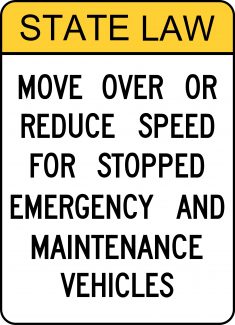 A local driver’s awareness of New York State’s “move over” law might not have helped state troopers Brent Karow and Shane Swartz all that much. Christopher Neumann was apparently under the influence of alcohol when he plowed into the troopers, as they assisted two tow-truck operators pulling a car out of the median of I-90 in the early-morning hours of March 4, 2018, seriously injuring them.
A local driver’s awareness of New York State’s “move over” law might not have helped state troopers Brent Karow and Shane Swartz all that much. Christopher Neumann was apparently under the influence of alcohol when he plowed into the troopers, as they assisted two tow-truck operators pulling a car out of the median of I-90 in the early-morning hours of March 4, 2018, seriously injuring them.
The troopers and tow operators had responded to an earlier crash on the interstate in North Greenbush, involving a motorist allegedly distracted by his cell phone. They were still at the scene when Neumann, a 26-year-old Albany man, lost control of his vehicle, which left the roadway and crashed into the police vehicle, the troopers and the tow-truck company owner.
Although drunk driving may prove to be the primary factor in this case, the crash nonetheless underscores the dangers faced by police and other emergency personnel who have stopped on or near roadways to issue tickets or respond to crashes. And it highlights the importance of the state’s “move over” law (NYS Vehicle and Traffic Laws, Article 26, § 1144 and § 1144-a), which took effect in January 2011 and has been modified twice to include not only police vehicles, ambulances and fire trucks, but also tow trucks, road construction and maintenance crews, and sanitation vehicles.
Essentially, the law requires motorists—when approaching a crash, construction, or other scene where emergency or work vehicles have lights flashing—to both slow down to a reasonable speed and, where possible, move over to the next lane. The law applies regardless of which side of the road the official vehicles are parked. Violations are punishable by two points on the offender’s license and a fine of up to $150.
The U.S. history of “move over” laws goes back to January 1994, when a South Carolina paramedic named James D. Garcia was struck by a vehicle and seriously injured while working a roadside crash scene. At that time, state laws typically defined emergency responders as “pedestrians,” and Garcia was declared at fault for stepping into the roadway. After several of his requests to change the incident report were denied, Garcia began lobbying the state legislature to enact laws to better protect emergency responders. South Carolina passed the nation’s first “move over” law in 1996.
Today, all 50 states have “move over” laws on the books; only Washington, D.C., does not.
It is commonly acknowledged by government and law-enforcement officials that public awareness of “move over” laws is not as widespread as it needs to be, and that many motorists still believe that slowing down and/or changing lanes for emergency responders is more of a courtesy than a legal requirement. State governments in New York and elsewhere have run PR campaigns to try to improve awareness of the law.
After the March 4 crash in North Greenbush, state police charged Neumann with first-degree vehicular assault—a felony—and driving while intoxicated. At a press conference later that day, Troop G Commander Major Robert Patnaude noted that the crash was precipitated by a chain reaction of two common types of dangerous behind-the-wheel behavior: distracted driving and drunk driving. His comments, however, also underscored the ideological hurdle that “move over” lawmakers are working to overcome.
“You’re driving a 3,000-pound vehicle that is a dangerous weapon, and people take it too lightly,” Patnaude said.
If you or a family member have been injured, LaMarche Safranko Law can help. Contact us at (518) 982-0770 or contact us online.
